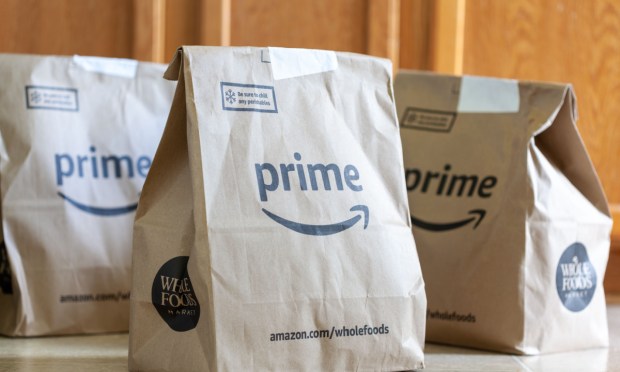Amazon Prime Raises the Bar for Grocery Memberships

As Amazon succeeds at whittling away at incumbent grocers’ shares of center-aisle purchases, smaller retailers are drawing inspiration.
According to a PYMNTS survey of nearly 2,700 U.S. consumers conducted last month, 61% of U.S. consumers are Amazon Prime members, and 26% are subscribed to Walmart+. Only 35% of consumers are not members of either service.
Given Amazon’s widespread reach, as well as the savings on consumer-packaged goods (CPG) and other shelf-stable items that the retailer offers via its Subscribe & Save offering (a program in which 42% of consumers with product subscriptions participate, per PYMNTS data), the company has a significant advantage.
Moreover, as President and CEO Andy Jassy noted in the company’s annual report, Amazon’s center-aisle assortment of 3 million items eclipsed the “typical supermarket’s” 30,000-product selection in the same areas. As such, traditional grocers are challenged to find new ways to set their own membership offerings apart and drive loyalty.
For instance, Kroger, the nation’s largest pure-play grocer, aims to leverage the lower cost of its membership to keep consumers coming back.
“We launched Boost, the industry’s most affordable membership nationwide in July,” Kroger CEO and Chairman Rodney McMullen said on the company’s last earnings call. “Early results are exceeding our expectations with incremental engagement and overall household spend. … In 2023, we will make significant investments to build out our personalization capabilities, including increasing the use of real-time data to predict customer needs, which will support sales growth during the next three years.”
Yet the success of Walmart, the largest grocery retailer in the world, in the membership space is not to be discounted, not only with Walmart+ but also at Sam’s Club, the company’s membership-only retail warehouse club subsidiary.
On Walmart’s latest earnings call, CEO Doug McMillon noted that Sam’s Club membership counts and premium Plus membership penetration reached “all-time highs” last quarter, with the total number of members up almost 30% relative to three years ago.
Warehouse club chain BJ’s Wholesale Club, which has more than 230 stores across 18 states, shared on its earnings call Tuesday (May 23) that it has been looking to the Walmart-owned warehouse club chain for inspiration on driving enrollment with discounting.
“We have the joy of competing against the best retailers in the world, and so we see what they do. We try and emulate the great stuff that they do. … Sam’s has been more and more aggressive from a membership perspective, and their results are to be admired. And certainly, we’ve tried to take some lessons from what they’re doing and tried to think up our own great ideas as well.”
Overall, membership programs, be they free delivery memberships such as Amazon Prime or access-centric programs such as BJ’s, can be key to drawing price-centric shoppers into a given retailer or grocer’s ecosystem. In fact, according to data from the March edition of PYMNTS’ Consumer Inflation Sentiment report, “Consumer Inflation Sentiment: The False Appeal of Deal-Chasing Consumers,” which drew from a survey of more than 2,100 United States consumers, 44% of grocery shoppers are deal chasers, willing to go wherever they will get the best price.
